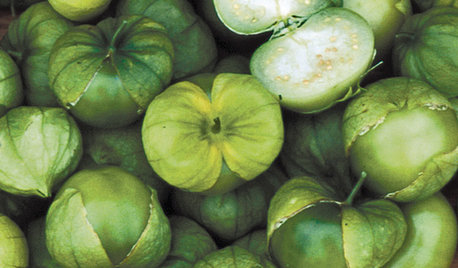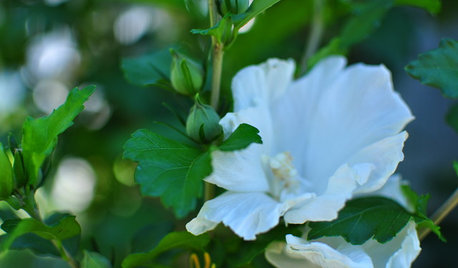Selective Herbicides on Tomatoes
eltejano
14 years ago
Related Stories

GARDENING GUIDESWeed War: When and How to Use Chemical Herbicides
Before you spray, arm yourself with knowledge about which weed killers — natural or synthetic — are right for your yard
Full Story
EDIBLE GARDENSSummer Crops: How to Grow Tomatoes
Plant tomato seedlings in spring for one of the best tastes of summer, fresh from your backyard
Full Story
COLOR10 Reasons to Make a Splash With Tomato Red
You won’t duck at these tomatoes. See how bold red shades can play up architecture, light up a dark spot and add drama
Full Story
SUMMER FRUITS AND VEGETABLESSummer Crops: How to Grow Tomatillos
Grow this Mexican native for the freshest salsa verde — and for fewer problems than its tomato cousins
Full Story0

GARDENING GUIDESMid-Atlantic Gardener's August Checklist
Bring in the bounty of tomatoes, savor the show of grasses and start seeding some cool-season plants
Full Story
KITCHEN DESIGNHouzz Quiz: Which Kitchen Backsplash Material Is Right for You?
With so many options available, see if we can help you narrow down the selection
Full Story
EDIBLE GARDENS8 Surefire Vegetables and Herbs for Beginning Gardeners
Learn the edible plants that are popular and easy to grow in a backyard or container garden
Full Story
FARM YOUR YARDHow to Build a Raised Bed for Your Veggies and Plants
Whether you’re farming your parking strip or beautifying your backyard, a planting box you make yourself can come in mighty handy
Full Story
GARDENING GUIDESHow to Switch to an Organic Landscape Plan
Ditch the chemicals for a naturally beautiful lawn and garden, using living fertilizers and other nontoxic treatments
Full StorySponsored
Leading Interior Designers in Columbus, Ohio & Ponte Vedra, Florida







sunnfarm3
eltejanoOriginal Author
Related Professionals
Cary Landscape Architects & Landscape Designers · Redondo Beach Landscape Architects & Landscape Designers · Salem Landscape Architects & Landscape Designers · Brooklyn Center Landscape Architects & Landscape Designers · Bethlehem Landscape Contractors · Blue Springs Landscape Contractors · Camp Verde Landscape Contractors · Mastic Beach Landscape Contractors · North Richland Hills Landscape Contractors · Tewksbury Landscape Contractors · Quartz Hill Landscape Contractors · Baileys Crossroads Landscape Contractors · Shenandoah Landscape Contractors · North Hills Landscape Contractors · Daphne Driveway Installation & Maintenanceprmsdlndfrm
sunnfarm3
eltejanoOriginal Author
eltejanoOriginal Author
sandy0225
eltejanoOriginal Author
sunnfarm3
eltejanoOriginal Author
eltejanoOriginal Author
eltejanoOriginal Author
muddydogs
eltejanoOriginal Author
eltejanoOriginal Author
Embothrium
sunnfarm3
eltejanoOriginal Author
prmsdlndfrm
eltejanoOriginal Author
prmsdlndfrm